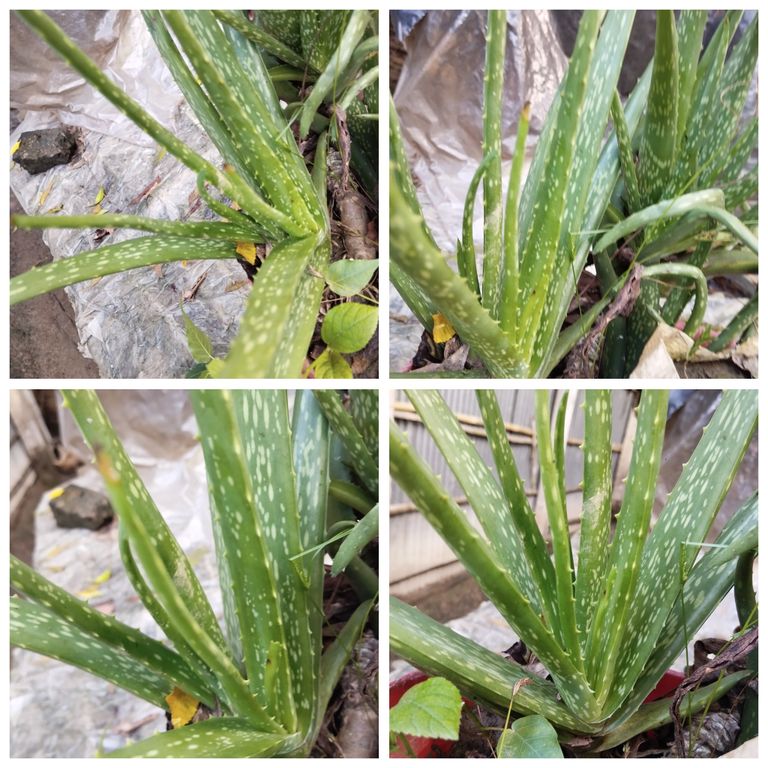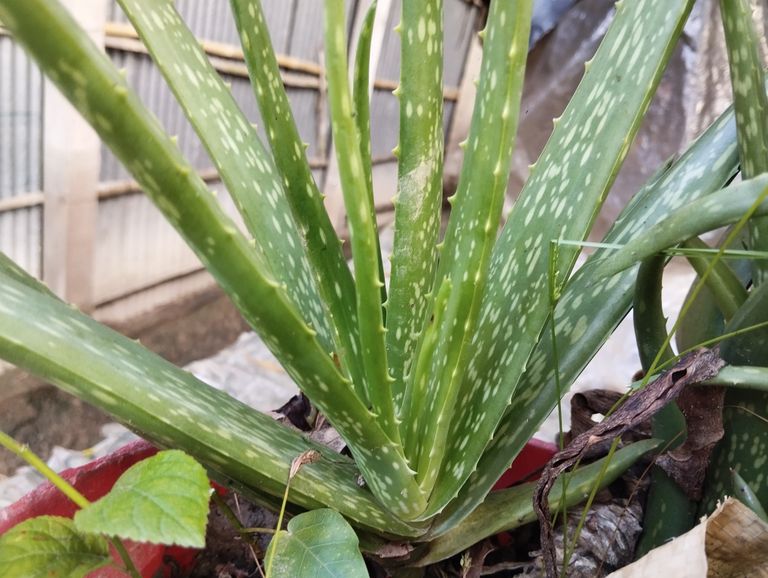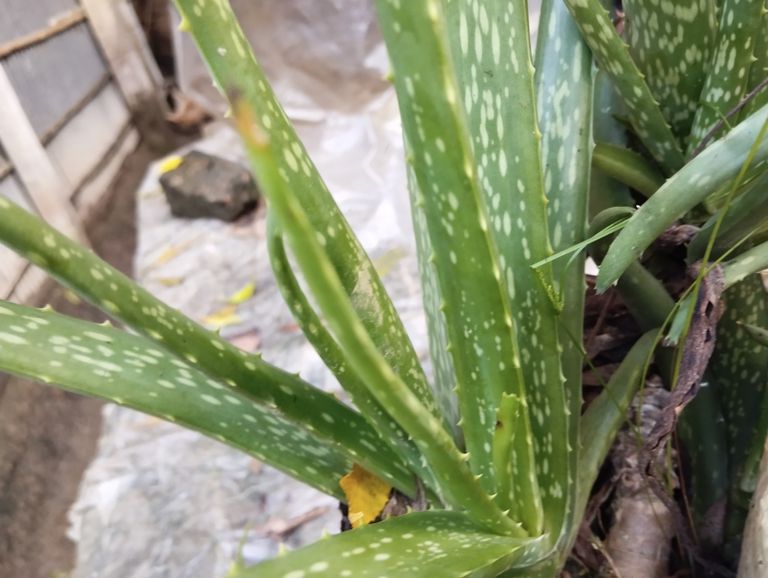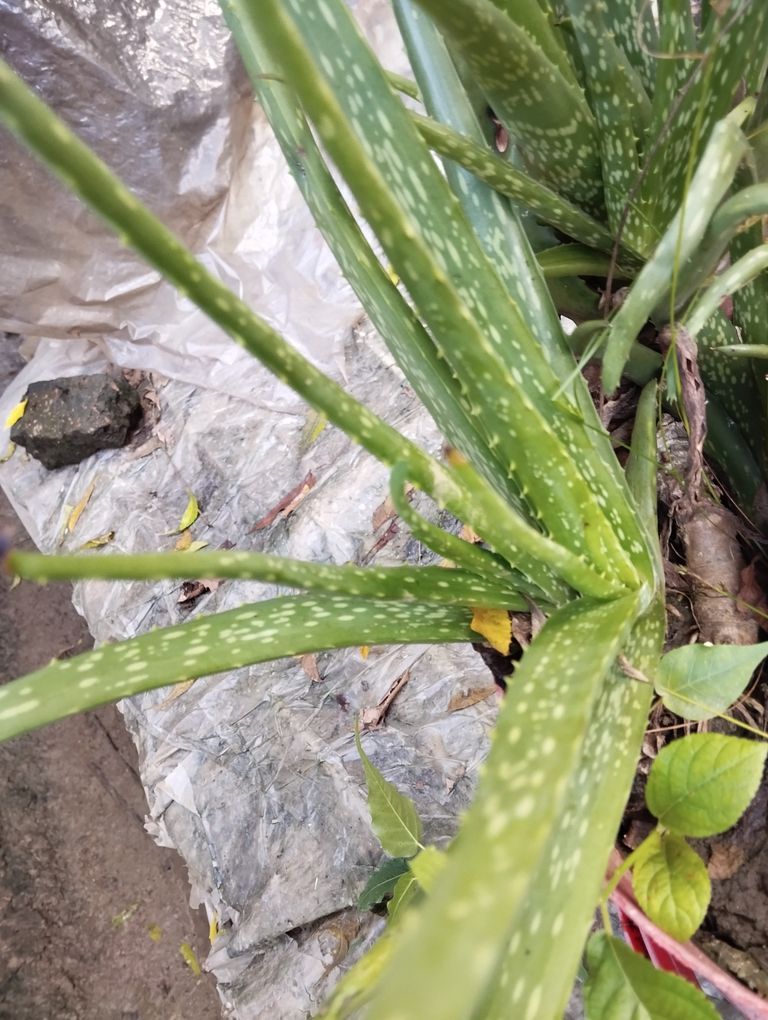
Here's a detailed blog on aloe vera cultivation.
Aloe Vera Cultivation Guide: A Profitable and Sustainable Farming Venture
Aloe vera, known for its medicinal and cosmetic properties, is a versatile plant that requires minimal resources to thrive. Due to its high demand in the pharmaceutical and cosmetic industries, aloe vera farming can be a profitable business for farmers. This article will provide a comprehensive guide to aloe vera cultivation, covering soil requirements, climate, planting methods, and essential care tips.
- Benefits of Aloe Vera Farming
High Demand: Aloe vera has extensive applications in health, beauty, and wellness products, ensuring a consistent market demand.
Low Maintenance: Aloe vera requires minimal care, making it suitable for both small-scale and commercial farmers.
Drought-Resistant: Ideal for areas with low water availability, aloe vera can thrive in arid and semi-arid regions.
Health Benefits: Aloe vera gel and extracts have numerous health benefits, making the plant valuable for pharmaceutical companies.
- Understanding Aloe Vera Plant Requirements
Climate
Aloe vera is a tropical and subtropical plant that grows well in hot climates. It thrives in temperatures ranging from 20°C to 40°C. The plant cannot withstand frost, so it is best suited for regions without extreme cold.
Soil Requirements
Type: Well-drained, sandy-loamy soil with pH levels between 6.0 and 7.5 is ideal for aloe vera cultivation.
Drainage: Good drainage is crucial as aloe vera roots are sensitive to waterlogging.
Organic Content: Adding organic matter, like compost or manure, improves soil fertility and promotes better growth.
- Land Preparation
Before planting, prepare the land by plowing it two or three times. This helps loosen the soil, ensuring good root development. Add organic compost or farmyard manure at a rate of 10-15 tons per acre to enhance soil fertility. If needed, install a drip irrigation system, as it is efficient for aloe vera plants, particularly in dry regions.
- Aloe Vera Planting Process
Propagation Method
Aloe vera is generally propagated through suckers, also known as offshoots. These offshoots are produced by mature plants and can be easily separated and planted.
Planting Steps
- Sucker Selection: Choose healthy suckers with at least 3-4 leaves and a well-developed root system.
- Spacing: Plant suckers with a spacing of 60 cm between rows and 45 cm between plants within the row. This spacing allows each plant to grow properly.
- Depth: Dig holes of about 10-15 cm depth and plant each sucker at a similar depth.
- Irrigation Needs
Frequency: Aloe vera is drought-tolerant, so it requires minimal watering. In the summer, water once a week, while in winter, reduce watering to once every two weeks.
Avoid Overwatering: Overwatering can cause root rot, damaging the plants. Ensure the soil dries out slightly between waterings.
Drip Irrigation: If possible, use a drip irrigation system to provide controlled moisture levels.
- Fertilization
Aloe vera does not require extensive fertilization. Apply organic compost during land preparation. You can also use a light dose of nitrogen fertilizer once or twice a year to boost plant growth. Avoid chemical fertilizers as they may reduce aloe vera's medicinal quality.
- Weed Management
Weeds can compete with aloe vera for nutrients and space, so regular weeding is essential. Manual weeding every 2-3 months is ideal. Mulching around the plants can also help prevent weed growth and conserve soil moisture.
- Pest and Disease Control
Aloe vera is generally resistant to pests and diseases, but some common issues include:
Mealybugs: These small insects can damage the plant by sucking its sap. Use organic insecticides or neem oil to control them.
Root Rot: Overwatering or poor drainage can lead to root rot. Ensure good drainage and avoid excessive watering.
Aloe Rust: This fungal disease appears as brown spots on leaves. Remove infected leaves and use fungicides if necessary.
- Harvesting Aloe Vera
Aloe vera is ready for harvest approximately 8-10 months after planting. The mature leaves, which contain a gel-like substance, are cut near the base. Harvesting can be done 3-4 times a year. Each plant can yield 3-4 kg of leaves annually.
- Post-Harvest Processing
After harvesting, aloe vera leaves should be processed quickly to retain freshness. Aloe gel is extracted by cutting the leaf open and scooping out the gel. It can then be processed into various forms like powder or juice for different industries.
- Market Opportunities for Aloe Vera Products
The demand for aloe vera is steadily increasing in the health, cosmetics, and pharmaceutical industries. Aloe vera gel, juice, and powder are widely used in skincare, dietary supplements, and medications. Farmers can sell raw leaves to processing companies or extract and sell gel for a higher profit margin.
- Profitability and Investment
With proper care, aloe vera farming can be a highly profitable venture. Initial investment costs include land preparation, sucker purchase, and installation of irrigation systems. After the first year, maintenance costs are minimal. Aloe vera plants can continue to produce for up to 5-7 years.
Conclusion
Aloe vera farming is a sustainable and profitable agricultural practice. With minimal investment and maintenance, farmers can achieve good yields and enjoy a steady income. Its numerous applications in various industries ensure a reliable market, making it an excellent choice for small and large-scale farmers alike.
This guide should give you a comprehensive understanding of aloe vera cultivation and its economic potential. If you need further details on any specific part, feel free to ask.


Benefits of Aloe Vera Leaves: A Natural Remedy for Health and Skin
Aloe vera, often referred to as the "wonder plant," has been valued for its healing properties and health benefits for centuries. With its succulent green leaves filled with a cooling gel, aloe vera is a staple in many households for both skincare and medicinal purposes. Below, we’ll delve into the multiple benefits of aloe vera leaves and how you can harness their natural properties to boost health and wellness.
- Skin Health and Healing
One of the primary uses of aloe vera is in skincare, thanks to its natural moisturizing, soothing, and healing properties.
1.1 Soothes Sunburns
Aloe vera gel acts as a protective layer on the skin and helps replenish its moisture. The antioxidants and minerals in aloe vera also aid in the skin's healing process, making it an ideal treatment for sunburns.
1.2 Moisturizes the Skin
Unlike conventional moisturizers, aloe vera gel doesn’t leave a greasy film on the face or skin. It can be used as a natural moisturizer for people with oily skin types and is beneficial for keeping dry skin hydrated.
1.3 Fights Acne
Aloe vera contains two hormones: Auxin and Gibberellins. These hormones provide wound healing and anti-inflammatory properties, which reduce skin inflammation. Gibberellins in aloe vera acts as a growth hormone that stimulates the growth of new cells, making it an effective treatment for acne.
1.4 Anti-Aging Properties
Aloe vera gel contains vitamins C and E, along with beta-carotene, all of which are known to fight aging. Its antimicrobial properties and anti-inflammatory qualities help to lighten blemishes and reduce wrinkles, making it a natural anti-aging remedy.
- Hair and Scalp Health
Aloe vera is not only beneficial for the skin but also for the scalp and hair.
2.1 Strengthens Hair
Aloe vera has proteolytic enzymes, which repair dead skin cells on the scalp. It also acts as a great conditioner, leaving hair smooth and shiny.
2.2 Promotes Hair Growth
Aloe vera increases blood circulation to the scalp, which is essential for stimulating hair growth. Its vitamins and enzymes help reduce hair breakage and promote stronger hair strands.
2.3 Reduces Dandruff
With its antimicrobial and anti-inflammatory properties, aloe vera is an excellent remedy for itchy, flaky scalp and dandruff. Regular use of aloe vera can balance the pH level of the scalp, reducing dandruff over time.
- Digestive Health
Aloe vera is also known to have significant digestive benefits.
3.1 Aids Digestion
The enzymes in aloe vera break down sugars and fats, easing digestion and helping relieve common digestive issues such as bloating, gas, and constipation.
3.2 Detoxifies the Body
Aloe vera is rich in water content, which helps hydrate the body and flush out impurities. Aloe juice can act as a gentle, natural detox for the body, improving overall digestive health.
3.3 Relieves Acid Reflux
Aloe vera juice is commonly used to treat acid reflux as it has soothing properties. It can reduce inflammation in the digestive tract, providing relief from heartburn and other related symptoms.
- Immunity Booster
Aloe vera is packed with nutrients that help enhance the immune system.
4.1 Contains Antioxidants
Aloe vera gel is rich in antioxidants that combat free radicals, which can damage cells and weaken the immune system. Consuming aloe vera juice can boost immunity by reducing oxidative stress.
4.2 Anti-Inflammatory Properties
Its anti-inflammatory properties help the immune system fight inflammation within the body, promoting better health and reducing the risk of chronic diseases.
- Wound Healing and Pain Relief
Historically, aloe vera has been used for its wound-healing capabilities.
5.1 Heals Cuts and Wounds
Aloe vera’s antibacterial properties help clean wounds and promote faster healing. The gel’s cooling nature also helps alleviate pain and itching from minor burns and insect bites.
5.2 Relieves Muscle and Joint Pain
For those suffering from arthritis or general muscle pain, aloe vera’s anti-inflammatory properties can provide relief. Topical application can reduce pain and inflammation in affected areas.
- Oral Health
Aloe vera is effective for oral hygiene due to its antibacterial and anti-inflammatory qualities.
6.1 Reduces Gum Inflammation
Aloe vera is beneficial for treating gum inflammation and bleeding. It helps soothe gum tissue, which can improve oral health.
6.2 Treats Mouth Ulcers
Applying aloe vera gel directly to mouth ulcers can help reduce pain and accelerate healing. Its soothing properties make it an ideal remedy for oral irritations.
- Supports Weight Loss
Aloe vera juice is often recommended for those looking to lose weight.
7.1 Boosts Metabolism
Aloe vera boosts metabolism, which can aid in weight loss. It improves calorie-burning efficiency and promotes lean muscle.
7.2 Reduces Water Retention
Its high water content helps flush out toxins from the body, reducing bloating and water retention. This makes it ideal for maintaining a healthy weight.
How to Use Aloe Vera for Maximum Benefits
- Topical Use
Cut an aloe vera leaf and scoop out the gel to apply directly to the skin or hair.
You can mix aloe vera gel with essential oils or other natural ingredients for enhanced skincare or hair care benefits.
- Aloe Vera Juice
Aloe vera juice can be prepared at home or bought from stores. It’s recommended to consume a small amount, as too much can lead to adverse effects.
Ensure the juice is pure and free from added sugars or preservatives.
Precautions When Using Aloe Vera
While aloe vera offers many health benefits, there are a few precautions to consider:
Allergic Reactions: Some people may be allergic to aloe vera. A patch test is recommended before applying it to the skin.
Internal Use: Consuming large amounts of aloe vera juice can lead to abdominal cramps or diarrhea due to its laxative properties.
Pregnant or Breastfeeding Women: Consult with a healthcare provider before using aloe vera as it can sometimes cause uterine contractions.
Conclusion
Aloe vera is truly a natural remedy with an array of health benefits, ranging from skincare to digestive health. Its rich blend of vitamins, minerals, and antioxidants make it versatile and beneficial for both topical and internal uses. However, it’s essential to use it in moderation and consult a healthcare provider if you have specific concerns. Embracing aloe vera as part of your daily routine can lead to healthier skin, improved digestion, and a stronger immune system, making it a worthy addition to your wellness regimen.

Here’s a guide for writing a detailed 4000-word blog post on caring for Aloe vera plants. You can use these sections to structure the blog post:
The Ultimate Guide to Aloe Vera Plant Care
Introduction
Briefly introduce Aloe vera as a popular indoor and outdoor plant known for its medicinal and beauty benefits.
Mention that it's an easy-to-care-for succulent, perfect for beginners.
State what readers will learn in the post: the ideal growing conditions, watering, repotting, dealing with common issues, etc.
- About Aloe Vera
Description: Discuss its origin, appearance, and key identifying features.
Varieties: Introduce popular types of Aloe, including Aloe Barbadensis (the most common type used for medicinal purposes) and other ornamental varieties.
- Ideal Growing Conditions for Aloe Vera
Light: Aloe vera thrives in bright, indirect sunlight. Explain what “bright, indirect light” means, and suggest ideal spots in the house or garden.
Temperature: Aloe vera prefers warm conditions and can tolerate high temperatures. Include ideal temperature ranges and mention that it doesn’t tolerate frost.
Soil: Aloe needs well-draining soil. Recommend cactus or succulent soil or explain how to create a mix with regular soil, sand, and perlite.
- Watering Aloe Vera
How Often to Water: Explain the “soak and dry” method. Describe signs of over- and underwatering, like yellowing or drooping leaves.
Seasonal Watering Needs: Aloe needs more water in summer and less in winter. Discuss how to adjust the watering schedule based on season and climate.
- Fertilizing Aloe Vera
Aloe doesn’t require much fertilizer, but a diluted succulent fertilizer once a year in the growing season can be beneficial.
List what nutrients Aloe vera benefits from (e.g., potassium, calcium).
- Repotting Aloe Vera
When to Repot: Aloe should be repotted every 1–2 years. Explain how to identify when it’s time to repot, such as rootbound signs.
How to Repot: Step-by-step instructions for repotting, including pot selection and how to handle roots.
- Aloe Vera Propagation
From Pups: Explain how to propagate Aloe vera by separating “pups” or offsets. Include steps for removing, drying, and planting pups.
By Leaf Cuttings: Discuss that, while not always successful, propagation by leaf cuttings is possible.
- Common Problems & Solutions
Pests: Aloe vera is generally pest-resistant, but it can sometimes get infested by mealybugs or aphids. Discuss natural and chemical pest control.
Diseases: Root rot is the most common disease for Aloe vera. Explain prevention (proper watering) and treatment (repotting and removing damaged roots).
Leaf Issues: Explain solutions for common issues like brown tips, wilting, and mushy leaves.
- Using Aloe Vera Gel at Home
Harvesting Gel: Explain how to harvest Aloe gel safely without harming the plant.
Uses of Aloe Gel: Highlight common uses for Aloe gel in skincare, sunburn relief, and hair care.
- Tips for Thriving Aloe Plants
Seasonal Adjustments: Summarize adjustments for lighting, watering, and temperature for each season.
Quick Troubleshooting: Include quick fixes for minor issues and how to make Aloe vera thrive indoors and outdoors.
Conclusion
Recap the key points of Aloe vera care.
Encourage readers to start their own Aloe vera journey, whether for decoration or home remedies.
This outline should set you up for an engaging, informative, and complete 4000-word blog post on Aloe vera care. Let me know if you need further assistance with the content for any specific section.

Aloe vera is a highly sought-after medicinal plant known for its healing properties, and its demand continues to grow in the pharmaceutical, cosmetics, and wellness industries. Cultivating aloe vera can be a profitable venture, given its relatively low maintenance needs and adaptability to various climates. Here is a comprehensive guide to cultivating aloe vera for optimal yield.
- Understanding Aloe Vera
Aloe vera belongs to the succulent family and is characterized by its thick, fleshy leaves filled with a gel-like substance. The gel is known for its soothing, moisturizing, and anti-inflammatory properties. Aloe vera plants thrive best in arid or semi-arid climates and can adapt to a range of soil conditions, making them ideal for cultivation in diverse regions.
- Choosing the Right Climate and Soil
Climate: Aloe vera prefers warm, dry conditions and is best suited for tropical or subtropical regions. It can tolerate temperatures between 20-40°C (68-104°F) but is sensitive to frost, so it should be protected during colder months.
Soil: The plant grows well in well-drained, sandy, or loamy soils. The soil pH should ideally be between 6.0 and 8.0, which is slightly acidic to neutral. Good drainage is crucial, as aloe vera roots do not tolerate waterlogging.
To improve soil drainage, adding sand, gravel, or organic matter like compost is beneficial. Raised beds or ridges are also helpful in preventing water accumulation around the roots.
- Land Preparation
Before planting, prepare the land by plowing and leveling it. Ensure the soil is free from weeds, stones, and other debris. Adding organic manure, such as compost or well-decomposed cow dung, will improve soil fertility. This step ensures that the aloe vera plants receive essential nutrients for better growth.
Consider applying 8-10 tons of organic manure per acre to enrich the soil. Creating beds or ridges can further help with water drainage and ease of planting.
- Propagation and Planting
Aloe vera is typically propagated through offshoots, also known as "pups." These pups grow at the base of mature plants and can be separated for replanting.
- Selecting Offshoots: Choose healthy, disease-free offshoots with a few leaves and a strong root system.
- Spacing: Plant the offshoots 60 cm (2 feet) apart in rows, with each row spaced about 75 cm (2.5 feet) apart. This spacing allows for adequate air circulation and provides room for each plant to grow.
- Planting Depth: Dig a small hole and plant each offshoot with its roots covered in soil but not buried too deep. Aloe vera should be planted at the same depth as it was in the mother plant to avoid root rot.
- Irrigation After Planting: Water the plants immediately after planting to help establish them in the soil. However, be cautious not to overwater, as excessive moisture can lead to root diseases.
- Watering and Irrigation
Aloe vera is a drought-resistant plant and requires minimal watering. The key is to avoid waterlogging while keeping the soil slightly moist. Watering once every two to three weeks is generally sufficient, depending on the climate and soil conditions.
Summer: In hot and dry conditions, water the plants once every 15-20 days.
Winter: Aloe vera requires even less water during cooler months. Avoid watering if the soil is already moist.
Installing drip irrigation is an effective way to provide a controlled amount of water and reduce the risk of overwatering.
- Fertilization and Nutrient Management
Aloe vera does not require heavy fertilization, but periodic nutrient application can enhance growth and yield.
Organic Fertilizer: Apply compost or well-decomposed manure once a year, preferably at the start of the growing season.
NPK Fertilizers: Applying a balanced NPK fertilizer in small quantities may be beneficial, especially if the soil lacks nutrients. Avoid excessive nitrogen, as it can promote foliage growth over gel production.
Regular soil testing will help determine the specific nutrient requirements and guide the fertilizer application.
- Weed Management
Keeping the aloe vera field free from weeds is crucial as weeds compete for nutrients and water. Manual weeding is effective and should be done every 3-4 weeks, especially in the initial stages. Using a mulch layer can also help reduce weed growth and maintain soil moisture.
Herbicides should be avoided, as aloe vera plants are sensitive to chemicals.
- Pest and Disease Control
Aloe vera is generally resilient to pests and diseases. However, some issues may arise, such as:
Pests: Aphids, mites, and mealybugs may attack aloe vera plants. Organic pesticides like neem oil can help control these pests.
Diseases: Aloe vera is susceptible to root rot, leaf spots, and fungal infections, especially if overwatered. Ensure good drainage and avoid waterlogging. Fungicides may be applied if necessary but should be used sparingly.
Practicing crop rotation and avoiding excessive watering are effective preventive measures.
- Harvesting Aloe Vera
Aloe vera can be harvested 8-10 months after planting, once the plant matures. Mature leaves, which are thick and fleshy, should be harvested first. Harvesting generally involves:
- Selecting Leaves: Choose the outermost leaves, as they are the oldest and contain the highest gel concentration.
- Harvesting Technique: Cut the leaves close to the base with a sharp knife, being careful not to damage the remaining plant.
- Frequency: Aloe vera can be harvested multiple times throughout the year, with each plant yielding leaves every 6-8 weeks.
Each mature aloe vera plant can yield 3-4 kg of leaves annually, depending on care and growing conditions.
- Post-Harvest Processing and Storage
After harvesting, aloe vera leaves should be processed as soon as possible to preserve the gel's quality. The gel can be extracted by peeling off the outer skin and scooping out the inner gel. It is essential to store the gel in a cool, airtight container to prevent oxidation.
Processed aloe vera gel can be used for various products, including skincare and health supplements. For commercial purposes, the gel may be further processed, stabilized, and packaged for distribution.
- Economic Benefits of Aloe Vera Cultivation
With growing demand in the cosmetic, food, and pharmaceutical industries, aloe vera farming offers significant economic potential. Aloe vera has a long shelf life and can be stored or processed into a variety of products, providing multiple revenue streams.
The initial investment for aloe vera farming is relatively low, primarily due to its minimal water and fertilizer requirements. Once established, aloe vera can be harvested for several years, making it a sustainable and profitable crop for small and large-scale farmers.
Conclusion
Aloe vera cultivation is a viable agricultural business with low maintenance needs and high demand across various industries. By following proper planting, watering, and harvesting practices, farmers can ensure a healthy yield and consistent income. With careful planning, pest control, and post-harvest management, aloe vera farming can become a reliable and lucrative venture.